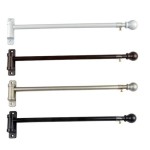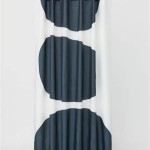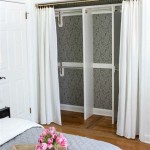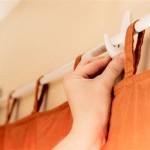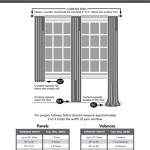Claw Foot Bathtub Shower Curtain: A Comprehensive Guide
The claw foot bathtub, a fixture that evokes a sense of vintage elegance, presents unique challenges when it comes to shower functionality. Unlike modern, built-in tubs, its freestanding nature necessitates a specialized shower curtain system to contain water and prevent splashes. Choosing the right claw foot bathtub shower curtain involves considering various factors, including curtain design, material, rod options, and installation techniques. This article aims to provide a detailed overview of these considerations, ensuring a practical and aesthetically pleasing shower experience for claw foot bathtub owners.
Claw foot bathtubs are characterized by their distinctive feet, elevating the tub above the floor and creating a visually striking focal point in the bathroom. These tubs often lack a surrounding structure that would normally accommodate a standard shower curtain. Consequently, a specialized shower curtain rod and curtain are required to create an enclosure. The shape and configuration of the rod, as well as the material and design of the curtain, are crucial elements in achieving effective water containment and maintaining the bathroom's overall aesthetic.
Understanding the Unique Challenges of Claw Foot Bathtub Showers
The primary challenge associated with shower curtains for claw foot bathtubs lies in their freestanding design. Unlike traditional bathtubs that are recessed into alcoves, claw foot tubs are exposed on all sides, requiring a shower curtain system that provides complete enclosure. This necessitates a specialized shower curtain rod that can either fully encircle the tub or cover a significant portion of its perimeter. The choice of rod and curtain system depends heavily on the layout of the bathroom, the desired level of privacy, and the user's aesthetic preferences.
Furthermore, the curvature of the claw foot bathtub can complicate the installation process. Standard straight shower curtain rods are not suitable for these tubs, requiring curved, circular, or oval rods that conform to the tub's perimeter. The dimensions of the tub must be carefully measured to ensure that the chosen rod provides adequate coverage and prevents water from escaping the enclosure. Improper measurements can lead to gaps in the curtain coverage, resulting in water damage to the bathroom floor and walls.
Another challenge is the potential for inadequate water pressure within the shower enclosure. The open design of claw foot bathtubs can lead to drafts that cause the shower curtain to billow inward, potentially sticking to the person showering. This issue can be addressed by using weighted shower curtains or by implementing strategies to improve ventilation within the bathroom. Careful consideration of these factors is essential to ensure a comfortable and functional shower experience.
Selecting the Right Shower Curtain Rod for a Claw Foot Tub
The shower curtain rod is arguably the most critical component of a claw foot bathtub shower system. Several rod configurations are available, each offering unique benefits and drawbacks. The most common types include circular, oval, and rectangular rods, as well as custom-bent rods designed to precisely match the shape of the bathtub. The choice of rod depends on factors such as the size and shape of the tub, the available space in the bathroom, and the desired aesthetic.
Circular shower curtain rods are ideal for bathtubs with a rounded or oval shape, providing complete enclosure around the tub. These rods are typically suspended from the ceiling or supported by wall-mounted brackets, ensuring stability and preventing sagging. Oval rods offer a similar level of enclosure but are better suited for bathtubs with a more elongated shape. Rectangular rods, on the other hand, are typically used when the bathtub is positioned against a wall or in a corner, providing coverage along the exposed sides.
The material of the shower curtain rod is another important consideration. Common materials include stainless steel, brass, and aluminum. Stainless steel is a durable and rust-resistant option, making it suitable for humid bathroom environments. Brass rods offer a more traditional aesthetic but may require more maintenance to prevent tarnishing. Aluminum rods are lightweight and affordable but may not be as durable as stainless steel or brass. Regardless of the material chosen, it is essential to ensure that the rod is securely mounted to the ceiling or walls to prevent it from falling down during use.
Installation of the shower curtain rod requires careful planning and execution. For ceiling-mounted rods, it is crucial to identify and locate ceiling joists to ensure that the mounting hardware is securely anchored. Wall-mounted brackets should be attached to studs or reinforced with drywall anchors to prevent them from pulling away from the wall. Proper installation is essential for ensuring the stability and longevity of the shower curtain system.
Choosing the Appropriate Shower Curtain Material and Design
The shower curtain itself plays a crucial role in water containment and aesthetic appeal. The choice of material and design should complement the overall style of the bathroom while providing effective protection against water splashes. Common shower curtain materials include vinyl, polyester, and cotton. Each material offers unique properties in terms of water resistance, durability, and ease of maintenance.
Vinyl shower curtains are a popular and affordable option, offering excellent water resistance and ease of cleaning. However, vinyl curtains can sometimes have a plastic odor and may not be as aesthetically pleasing as other materials. Polyester shower curtains are a more durable and eco-friendly alternative to vinyl, offering good water resistance and a wide range of design options. Polyester curtains are also machine washable, making them easy to maintain.
Cotton shower curtains offer a more luxurious and natural look, but they require a shower curtain liner to provide adequate water resistance. Cotton curtains are absorbent and can be prone to mildew growth if not properly dried. However, they offer a soft and inviting feel and can be easily customized with different patterns and colors. The use of a liner with a cotton curtain provides the necessary water barrier while allowing for the aesthetic benefits of the natural fabric.
The design of the shower curtain should complement the overall style of the bathroom. Options range from simple and minimalist designs to elaborate patterns and prints. Consider the color scheme, fixtures, and other decorative elements in the bathroom when selecting a shower curtain design. A well-chosen shower curtain can enhance the visual appeal of the bathroom and create a cohesive and inviting space.
In addition to the material and design, the length and width of the shower curtain are also important considerations. The curtain should be long enough to reach the floor or slightly above it, preventing water from splashing underneath. The width of the curtain should be sufficient to provide adequate coverage around the tub, preventing water from escaping through the sides. Measure the dimensions of the bathtub and the shower curtain rod carefully to ensure that the chosen curtain provides adequate coverage.
Shower curtain rings or hooks are used to attach the curtain to the rod. A variety of ring and hook styles are available, ranging from simple plastic rings to decorative metal hooks. Choose rings or hooks that complement the style of the shower curtain and the overall aesthetic of the bathroom. Ensure that the rings or hooks are durable and easy to slide along the rod for smooth and effortless operation.
Beyond the curtain itself, a shower curtain liner is a vital component. The liner, typically made of vinyl or polyester, serves as the primary barrier against water. It protects the decorative shower curtain from getting wet and prolongs its lifespan. Liners are also easier to clean and replace than the main curtain. Regular cleaning or replacement of the liner helps prevent mold and mildew growth, ensuring a hygienic shower environment.

Utopia Alley 180 In X 70 White Waffle Weave Clawfoot Tub Shower Curtain Wrap Around With 36 Hooks Set Bl3ww

Utopia Alley Hoop Shower Rod For Clawfoot Tub Black

Rub A Dub Shower Curtains For Clawfoot Tubs Curtain Tracks Com

Randolph Morris 48 Inch Clawfoot Tub Wall Mount Shower Enclosure With Ring And Handheld Rm168s 48c Chrome

Getuscart Mrs Awesome Clawfoot Tub Shower Curtain Or Liner With 12 Magnets Free 36 Hooks Included Waterproof Peva 180 X 70 Clear

Clawfoot Tub Shower Curtain Liner Weight Update The White Apartment

Clawfoot Tub Shower Curtain 180x72 Inch With 30 Holes And 180 W X 72 H Clear

Installing A Claw Foot Tub With Curtain Surround Fine Homebuilding

Utopia Alley Hoop Shower Rod For Clawfoot Tub Bronze

Creowell Clawfoot Tub Shower Curtain Wrap All Around Circular Round Floral Wildflower Botanical Tulip Plants Decor Bathroom Polyester Waterproof Metal

